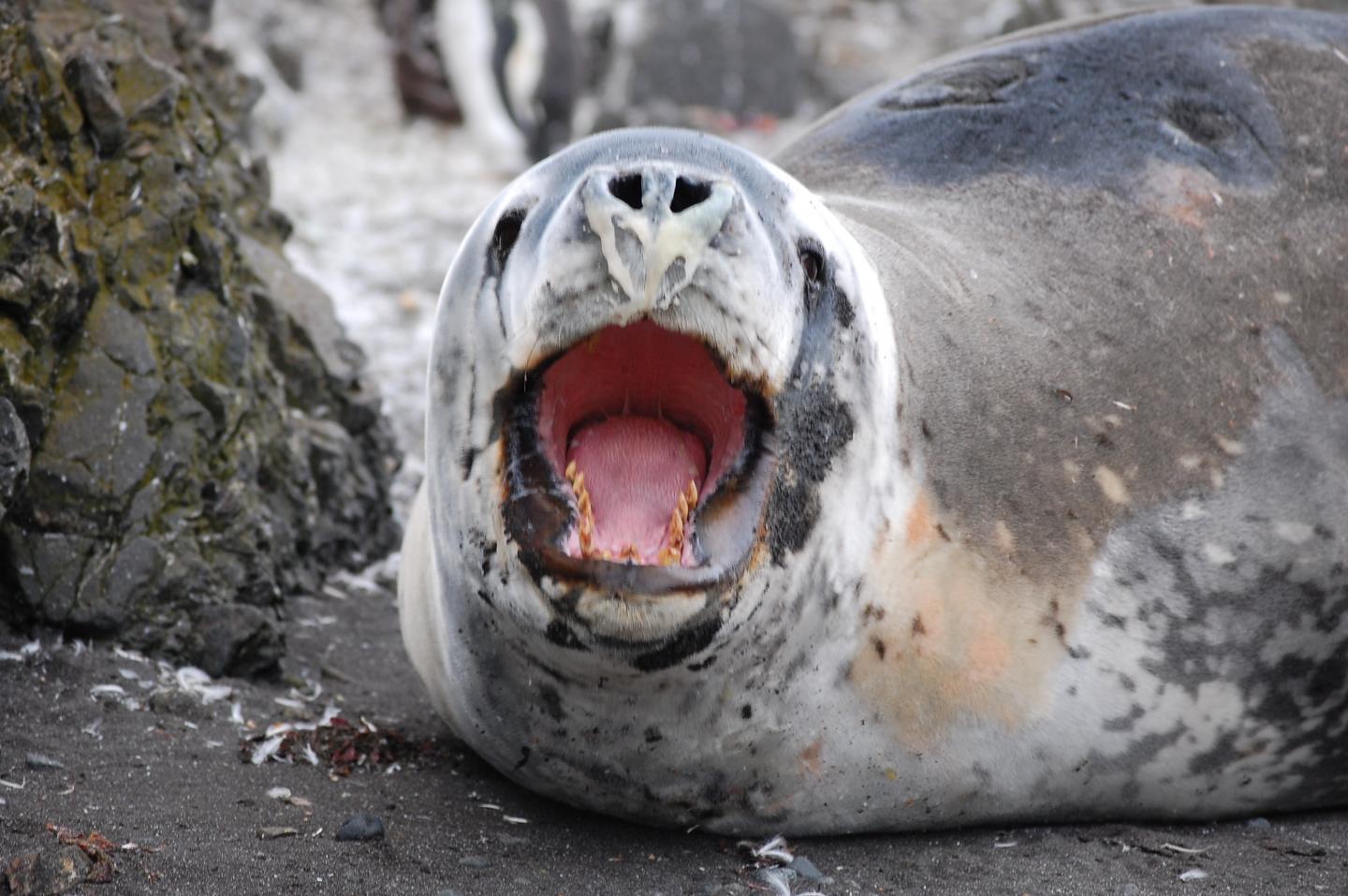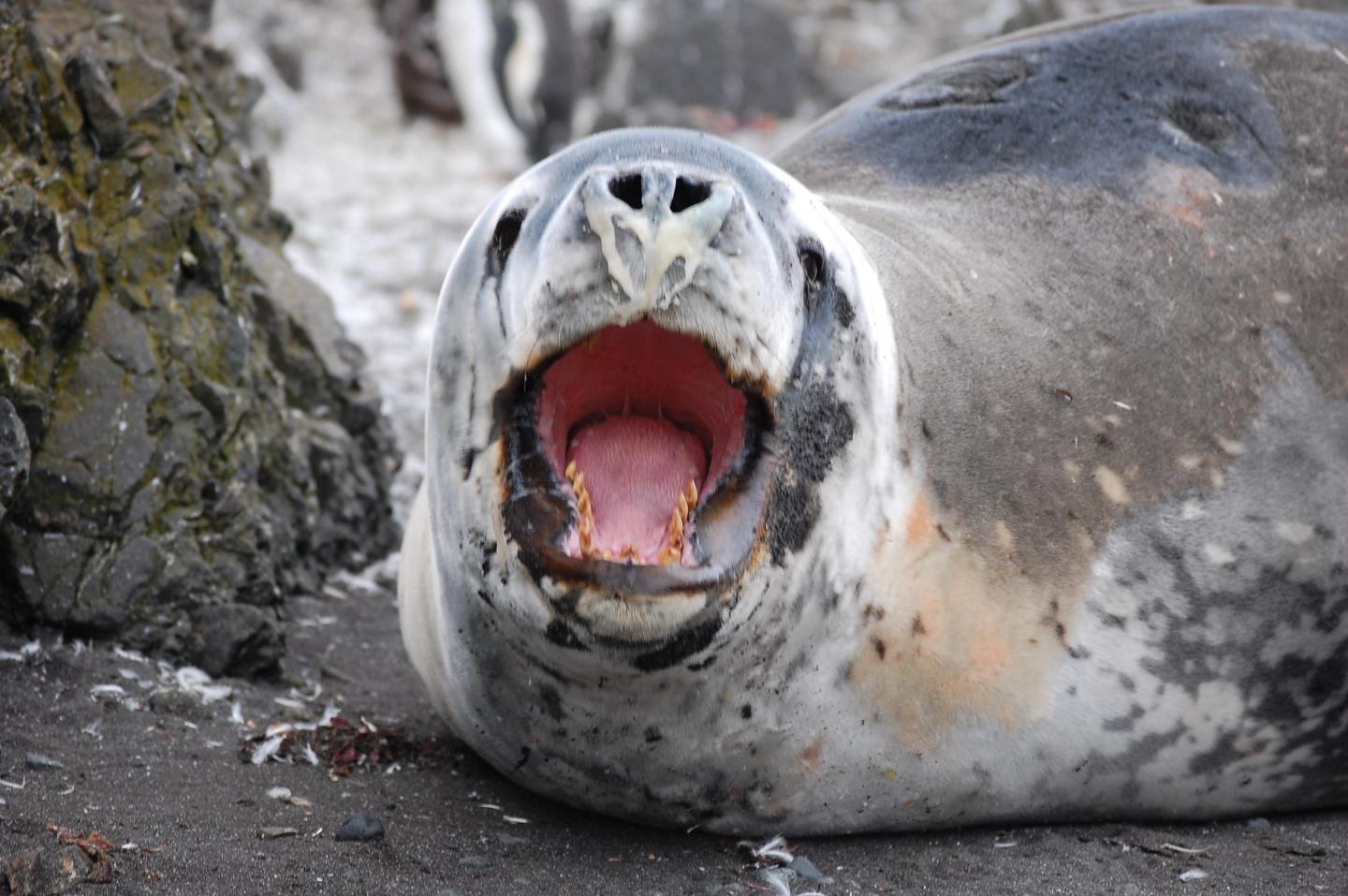
Credit: NOAA Fisheries/Southwest Fisheries Science Center
Scientists in Antarctica have demonstrated a cheaper, faster and simpler way to gauge the condition of leopard seals, which can weigh more than a half ton and reflect the health of the Antarctic ecosystem that they and a variety of commercial fisheries rely on.
Instead of spending hours to pursue, catch, immobilize, and weigh the seals amid hazardous conditions on the Antarctic Peninsula, researchers can now gain the same information from a single photograph taken by a small unmanned aerial system, popularly known as a drone. Scientists from NOAA Fisheries' Southwest Fisheries Science Center and Aerial Imaging Solutions described the approach today in the online journal PLOS ONE.
"We continue to develop technologies to gather the data we need to manage fish and wildlife in a safer, less expensive way," said Douglas Krause, a research scientist in the Southwest Fisheries Science Center's Antarctic Ecosystem Research Division (AERD), and lead author of the paper demonstrating the new research method. "We're certainly excited because we can get that much more work done, in less time, and at lower costs than ever before."
Scientists tested the accuracy of aerial measurements by catching and measuring the same seals the drone photographed. They found the length measurements accurate to within about 2 percent, and the weight measurements within about 4 percent. The biggest difference was the time and effort involved: While a crew of five people took more than four hours to capture each of 15 leopard seals for the study, a crew of two people using the drone needed only about 20 minutes to gather the same data.
The seals showed no reaction to the drone as long as it stayed above 23 meters, about 75 feet.
"We can get measurements that are just as good, or better, without ever bothering the animals," Krause said in an email from Antarctica. "Catching a single seal can take hours, but the drone can photograph every seal on a beach in a few minutes."
Leopard seals prey upon penguins and Antarctic fur seals. In turn, these species rely heavily on populations of Antarctic krill – small, shrimp-like crustaceans. Krill are harvested commercially and are a key ingredient of nutritional supplements, aquaculture feed, and other products. As such, leopard seals, penguins and fur seals not only are important components of Antarctic coastal ecosystems, but they serve as "indicators" of the health of Antarctic fisheries.
"When we think about indicator species in Antarctica, we often think about highly abundant species such as penguins," said Jefferson Hinke, a coauthor and research scientist in the AERD. "But top predators, such as leopard seals, are also sensitive to their environment and monitoring them provides additional information on the status of the Antarctic ecosystem."
Examining the body condition of the seals, for example, helps scientists understand the health and abundance of krill, which in turn helps fishery managers assess how much the fishing fleet can catch each season.
"We're always looking for more efficient ways to collect data that informs decisions on how to manage these important resources," said George Watters, director of the AERD. "The better we understand the ecosystem, the better we can ensure it's protected for the long term."
Scientists can use drones to track the change in the weight of leopard seals over the course of the summer, revealing how much they are eating, and can break the population down by age to better understand the overall health of the population. Use of aerial photographs could actually improve the accuracy and depth of data over the longer term because scientists can survey far more leopard seals in the same amount of time, Krause said.
Combining a single photograph of each animal with a computer model that calculates their weight minimizes errors that might be introduced by multiple photos from different angles, the scientists found.
"It's a matter of keeping it simple, and focusing on the data we really need," Krause said. "This is a more effective and safer way to gather more of that data than w
Media Contact
Michael Milstein
[email protected]
503-231-6268
@NOAAFish_WCRO
http://www.westcoast.fisheries.noaa.gov/index.html
Original Source
https://swfsc.noaa.gov/contentblock.aspx?Division=AERD&id=22854 http://dx.doi.org/10.1371/journal.pone.0187465





